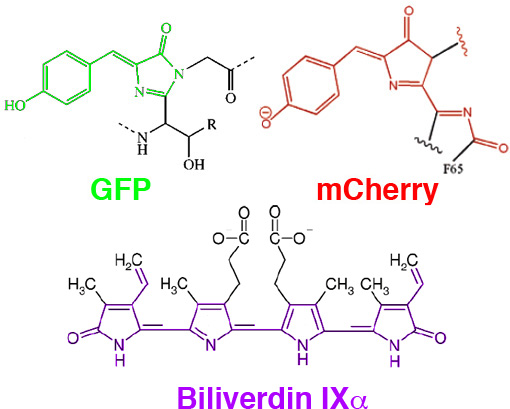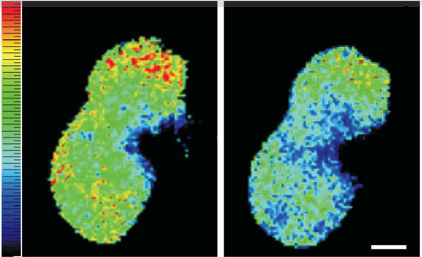If you live in Southern California and are interesting in imaging technology, there isn’t a better place to be than this symposium. If you can’t make it, Brain Windows will have a full write-up following the event.
Here is the un-official schedule.
Tuesday February 17th – Price Center East Ballroom
9:00 -9:05 Varda Levram -Ellisman Opening
9:05-9:15 Palmer Taylor
Designing the next generation of genetically encoded sensors
9:15-9:30 Roger Heim
FRET for compound screening at Aurora/Vertex
9:30-9:45 Amy Palmer
Designing and using genetically encoded sensors: Lessons I learned from Roger
9:45-10:00 Robert Campbell
Beyond brightness: colony screens for fluorescent protein photo stability and biosensor FRET changes
10:00-10:15 Colette Dooley
GFP sensors for reactive oxygen species: Tying up loose ends and looking forward.
10:15-10:30 Peter Wang
Fluorescent Proteins and FRET biosensors for visualizing cell motility and mechanotransduction
Fluorescent proteins in neuroscience
11:00-11:15 Brian Bacskai
Aberrant calcium homeostasis in the Alzheimer mouse brain
11:15-11:30 Andrew Hires
Watching a mouse think: Novel fluorescent genetically-encoded calcium indicators applied to in vivo brain imaging
11:30-11:45 Alice Ting
Imaging synapse development with engineered photophore ligases
11:45-12:00 Rex Kerr
3D calcium imaging in C. elegans
Clinical applications
12:00-12:15 Todd Aguilera
Activatable Cell Penetrating Peptides for use in clinical contrast agent and therapeutic development
12:15-12:30 Quyen Nguyen
Surgery with Molecular Fluorescence Imaging Guidance
Fluorescent probes (Chemistry)
1:30-1:45 Tito Gonzalez
Voltage-Sensitive FRET Probes & Applications
1:45-2:00 Paul Negulescu
From watching ions to moving them
2:00-2:15 Timothy Dore
Roger-Inspired Photochemistry: Releasing Biological Effectors with 2PE
2:00-2:15 Joe Kao
Electron Paramagnetic Resonance Imaging in Living Animals
2:15-2:30 Brent Martin
Chemical probes for studying protein acylation
2:30-2:45 Jianghong Rao
Non-GFP based probes for imaging of the hydrolytic enzyme activity
Cellular research with and without Fluorescent probes
3:15-3:30 Carsten Schultz
Cell membrane repair visualized by GFP fusion proteins
3:30-3:45 David Green
Transcriptomes and Systems Biology: application to early mammalian embryogenesis
3:45-4:00 Clotilde Randriamampita
Paradoxical aspects of T cell activation revealed with fluorescent proteins
4:15-4:30 Wen-Hong Li
Studying dynamic cell-cell communication in vivo by Trojan-LAMP
4:30-4:45 Martin Poenie
Aim and Shoot: Two roles for dynein in T cell effector function
4:45-5:00 Gregor Zlokarnik
From bla to blah, blah in 20 years
5:00-5:15 James Sharp
President, Zeiss MicroImaging Gmbh
February 18 2009 – Leichtag 107
Cellular research with and without fluorescent proteins
9:00-9:15 David Zacharias
Fluorescent Proteins, Palmitoylation and Cancer: two out of three ain’t bad
9:15-9:30 Jin Zhang
Visualization of Cell Signaling Dynamics: A Tale of MAPK
9:30-9:45 Paul Sammak
Nuclear organization and movement in pluripotent stem cells measured by Histone GFP H2B
Branching out
9:45-10:00 Yong Yao
NIH Toolbox Program
10:00-10:15 Oded Tour
The Tour Engine – A novel Internal Combustion Engine with the potential to boost efficiency and cut emissions
Into the future
10:45-11:00 Xiaokun Shu
Visibly and infrared fluorescent proteins: photophysics and engineering
11:00-11:15 Michael Lin
Engineering fluorescent proteins for visualizing newly synthesized proteins and improving FRET-based biosensors
11:15-11:30 Jeremy Babendure
Training our next generation of Fluorescent Protein Enthusiasts
Main Event – Price Center Theater
4:00-5:00 Roger Tsien
Chancellor invitational lecture 2008 Nobel Prize in Chemistry

















Recent Comments